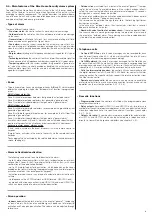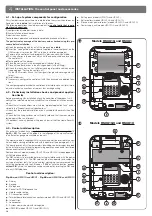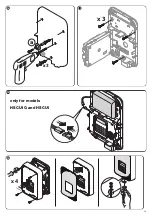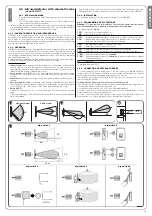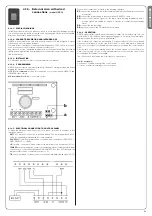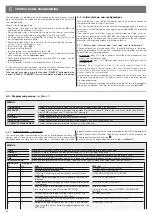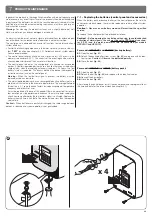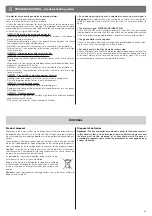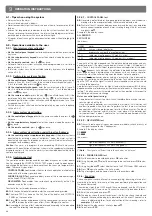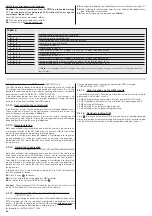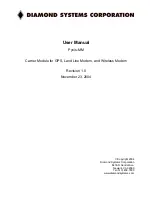
22
A
B
31
33
32
5.1 - Warnings
•
The connection to the mains must be performed by skilled and quali-
fied personnel in observance of standards governing electrical installa-
tions.
• On the system, fit a 2-pole disconnect device with a gap between contacts
of at least 3 mm, or use an electric cable equipped with a plug suited to a
standard socket.
• Run any tests with battery power only (the battery must be fully charged.
5.2 - Connections on the control panel
(models HSCU1GC and HSCU1C only)
Caution!
– Before opening the control panel housing, always disconnect
the mains power supply.
01.
To connect the mains power cable, insert the ferrite cylinder as shown in
fig. 31
and position as shown in
fig. 32
;
Warnings:
- To facilitate insertion of the wires on the terminals, press the relative
release button.
- The wires must be secured by tightening the screw on the terminal cover;
02.
To make electrical connections to the terminal board, refer to
Table 4
;
03.
To insert the backup battery (not supplied) refer to
fig. 33
;
04.
On completion of connections, close the internal cover and only then acti-
vate the disconnect device and insert the plug in the socket.
5.3 - Connections on siren model HSSOC
To make the electrical connection between the siren and control panel, refer to
Table 4
and see
fig. 32
ELECTRICAL CONNECTIONS
5
SPK
External loudspeaker output (8
Ω
). Suitable for additional loudspeaker that reproduces the control panel messages; see
fig. 34
+ ALI
Positive always present, for power supply of wired detectors; 12 Vdc maximum 500 mA; see
fig. 35
+ OFF
Positive present when control panel is activated, for wired siren block command ; see
fig. 36
GND
(all)
Negative for all connections
+ SIR
Positive in alarm status, for additional sirens; 12 Vdc maximum 500 mA; see
fig. 37
+ SAA
Positive (14 Vdc) for battery charger of wired sirens (not present in event of mains power failure; see
fig. 36
+ N
Positive on absence , for alarm command on wired sirens. If more than one siren is connected, a diode must be inserted to avoid the
return signal; see
fig. 36
.
Caution! –
Do not use this output to power the sirens
KEY
Input for external key (closed = control panel disarmed); see
fig. 38
A1-2 B1-2 C1-2
NC alarm inputs; see
fig. 39
TMP A-B-C
NC auto-protect (tamper) inputs; see
fig. 39
NC1-COM1-NO1
R1 relay output (connect only to SELV extra low voltage safety circuits); see
fig. 40
NC2-COM2-NO2
R2 relay output (connect only to SELV extra low voltage safety circuits); see
fig. 40
PHONE
Connection to fixed PSTN telephone line; see
fig. 6
PC
Connector for connection to PC (requires specific USB interface); see
fig. 6
Notes:
• The alarm and tamper inputs must be NC and are enabled on initial closure. If closed inadvertently they indicate an alarm status. To clear the signal,
enter and exit CONTROL PANEL TEST mode;
• The TMP inputs must be programmed on the same groups as the corresponding detectors.
TABLE 4 - DESCRIPTION OF ELECTRICAL CONNECTIONS
OUTPUT
DESCRIPTION
Summary of Contents for HSCU1
Page 1: ...Nice HSCU1 Instructions and warnings for installation and use Home security control unit 0682 ...
Page 2: ......
Page 14: ...12 b a 11 12 13 CRACK CRACK CRACK 14 x 3 x 1 a 15 ...
Page 15: ...18 only for models HSCU1G and HSCU1 x 4 19 x 3 a 16 x 3 17 13 ...
Page 32: ...42 x 4 44 only for models HSCU1GC and HSCU1C 43 only for models HSCU1G and HSCU1 30 ...
Page 39: ......


